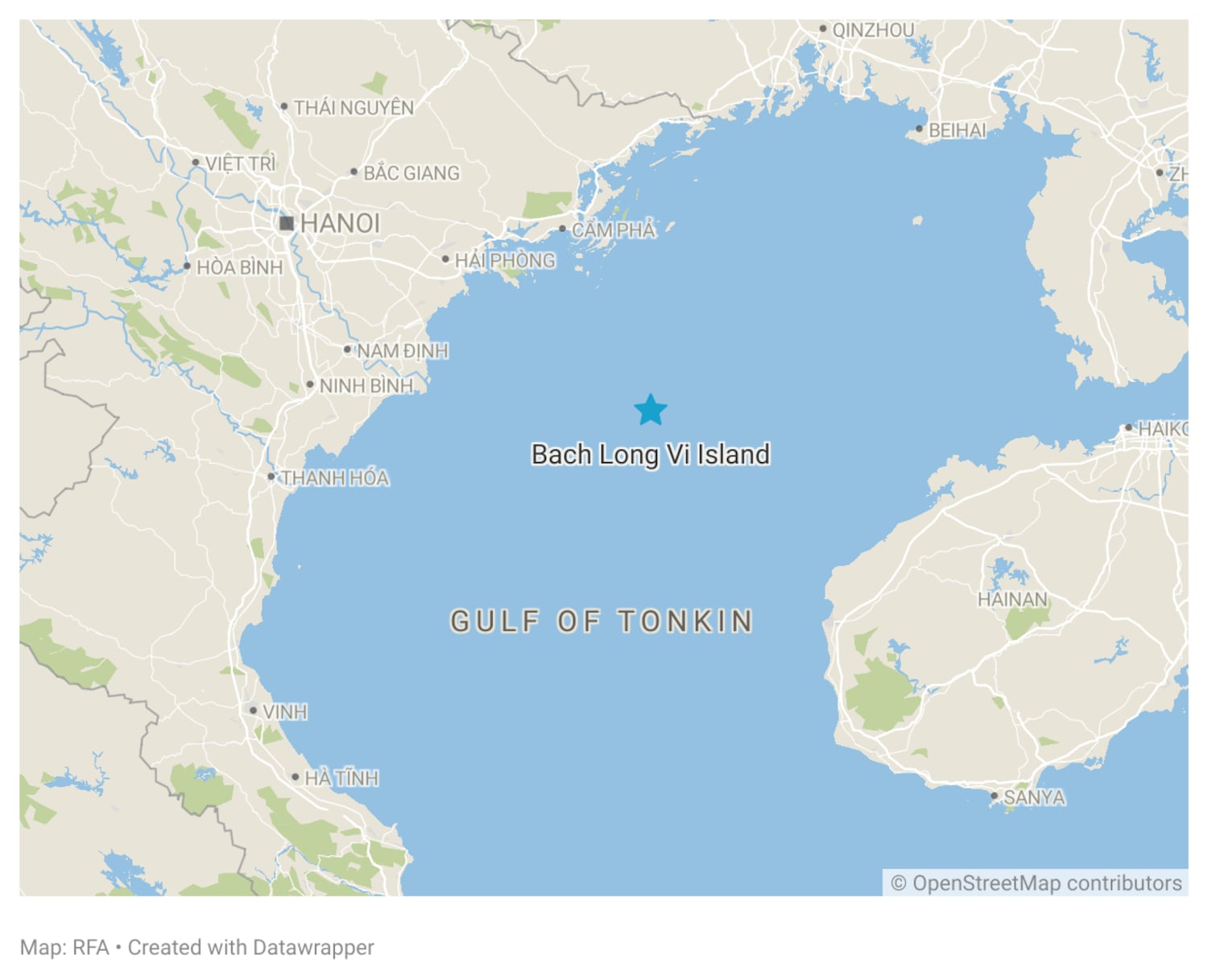Vietnam’s top leader To Lam has made a widely publicized visit to an island north of the South China Sea, seen by an analyst as underscoring its strategic importance in the waters shared with China.
Lam became the first general secretary of the Vietnamese Communist Party to visit Bach Long Vi island in the Gulf of Tonkin since 2000, when Hanoi and Beijing finally signed an agreement to clearly demarcate their boundary there after nine years of negotiations
Last March, China unilaterally announced a new baseline that defines its territory in the northern part of the gulf called Beibu in Chinese, drawing concern from the Vietnamese government. Some analysts said that Beijing may use it as a pretext to push Hanoi to renegotiate the boundary agreement.
During the visit on Thursday, To Lam called on local government officials to develop Bach Long Vi island, “ensuring that it becomes a fortress for defending Vietnam’s maritime sovereignty,” according to media reports.
“The Party chief praised the island’s strategic importance, pointing out that Bach Long Vi serves as a key maritime gateway, controlling vital shipping lanes in the Gulf of Tonkin and providing logistics services for military activities at sea,” the Vietnam News Agency reported.
“General Secretary To Lam’s visit to Bach Long Vi was billed as a trip to learn about the living and working conditions of local residents,” said Carlyle Thayer, emeritus professor at the Australian Defence Force Academy in Canberra.
“However, the sub-text of his visit was to underscore the importance of the island’s infrastructure to national security and defense of Vietnam’s sovereignty over islands and sea.”

‘Normal practice’
“Media coverage highlighted that Bach Long Vi was located 15 nautical miles from the boundary line delimiting the Gulf of Tonkin,” noted Thayer. The distance means the island sits entirely inside Vietnam’s waters.
Bach Long Vi is Vietnam’s furthest island from its mainland and the largest habitable island in the South China Sea, with an area of more than 3 square kilometers (1.2 square miles). It is about 110 km (68 miles) from Haiphong in Vietnam and 120 km (75 miles) from China’s Hainan Island.

Bach Long Vi was transferred to Vietnam in March 1957 by a friendly China, which occupied it at the time, allowing Hanoi to establish a radar station there for early warning against U.S. air attacks.
Vietnamese historians said Beijing “returned” the island to the Democratic Republic of Vietnam, but some Chinese sources criticized the government of then-premier Zhou Enlai for “ceding” it.
In December 1992, it became an island district under the municipal government of Haiphong City.
“The Vietnam-China Maritime Boundary Delimitation Agreement for the Gulf of Tonkin signed in 2000 recognized that Bach Long Vi was a Vietnam’s island,” said Vu Thanh Ca, former director of the Vietnam Institute for Sea and Island Research, “There’s absolutely no dispute over its sovereignty.”
“Given the importance of Bach Long Vi as one of Vietnam’s frontier islands, Party chief To Lam’s visit is a normal practice,” he added.
Before the general secretary, Vietnam’s presidents Nguyen Minh Triet and Truong Tan Sang visited the island in 2010 and 2014 respectively, where they made strongly worded statements about “defending every inch of our country’s sea and islands.”
The year 2014 saw heightened tensions between Vietnam and China after the latter moved a deep-water oil drilling platform to near the Paracel archipelago that both countries claim. Beijing, however, did not officially react to the visits.
“China’s government does not and cannot dispute Vietnam’s sovereignty over it,” said Huy Duong, a Vietnamese South China Sea researcher. “But this does not stop some overly nationalistic Chinese regretting that China ‘gave away’ Bach Long Vi to Vietnam.”
RELATED STORIES
China announces ‘excessive’ baseline in Gulf of Tonkin
Vietnam mulls own territorial line in Tonkin Gulf
Hanoi asks Beijing to abide by law while drawing baseline in Gulf of Tonkin
Edited by Mike Firn.
This content originally appeared on Radio Free Asia and was authored by RFA Staff.
This post was originally published on Radio Free.